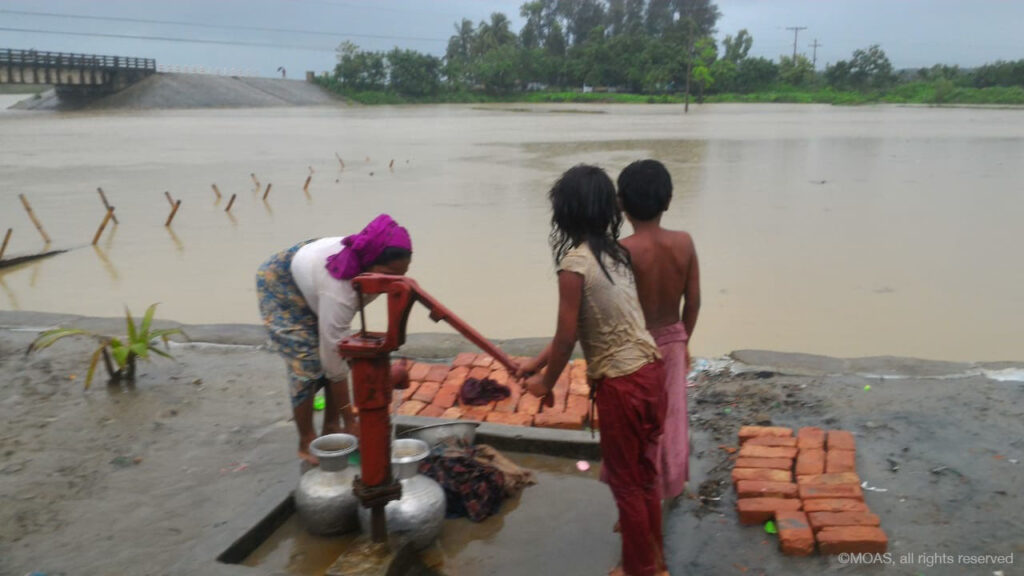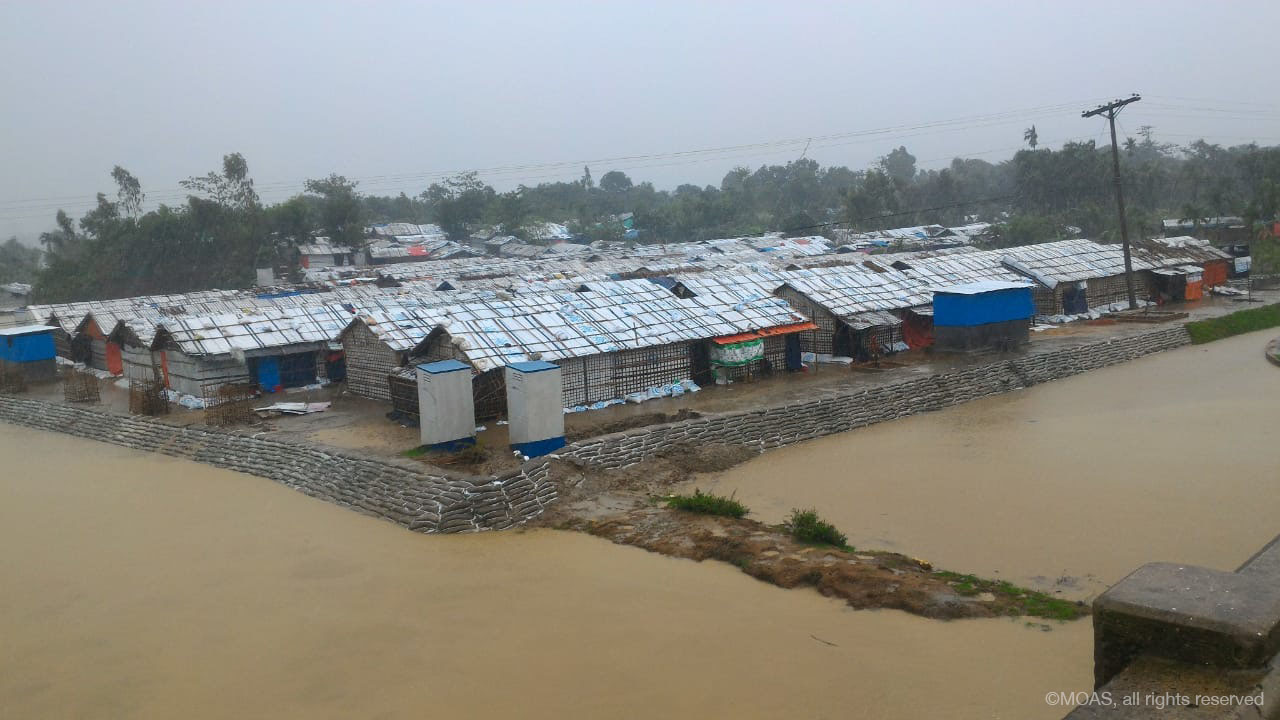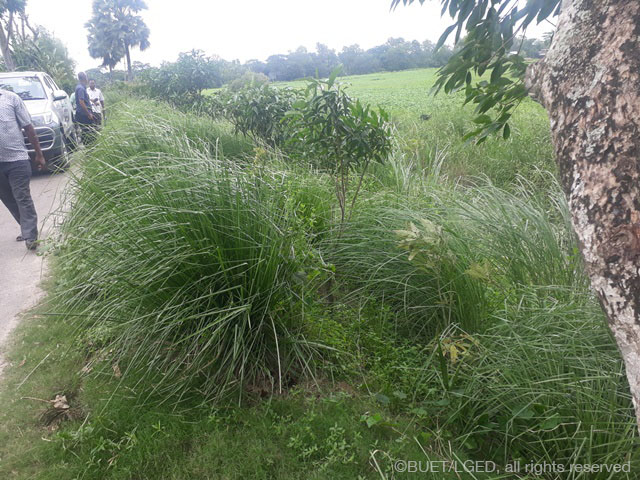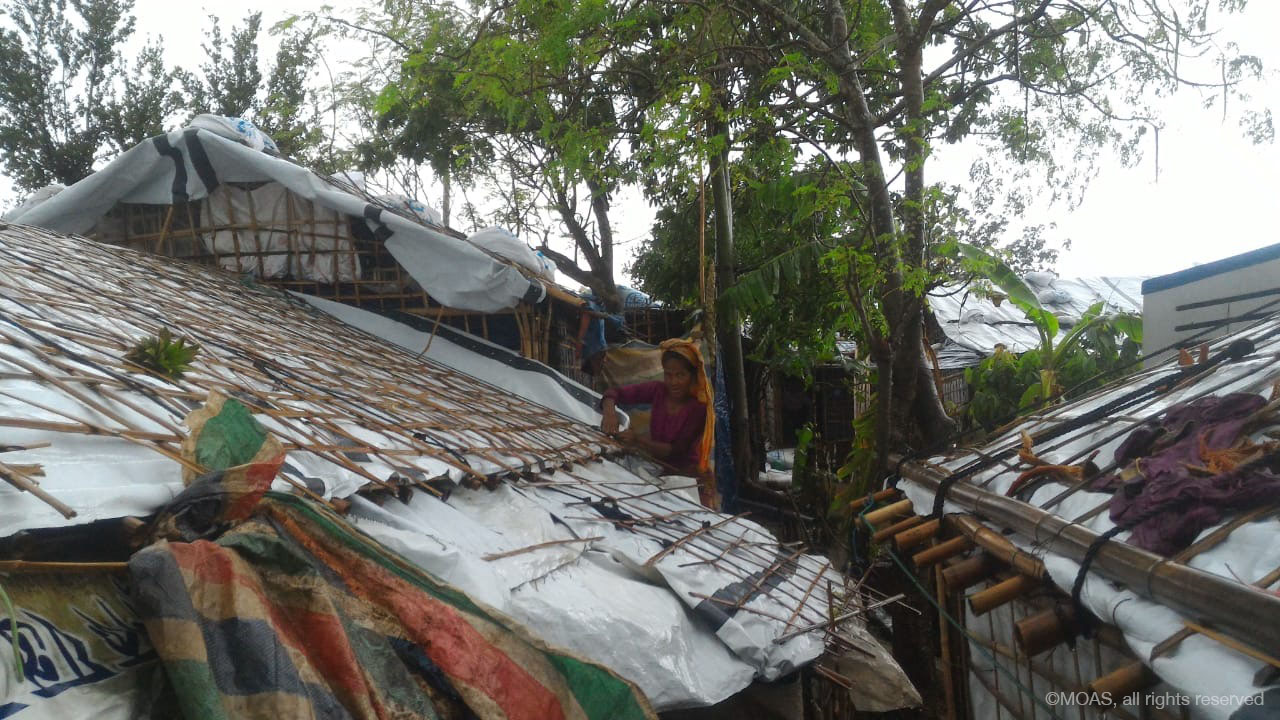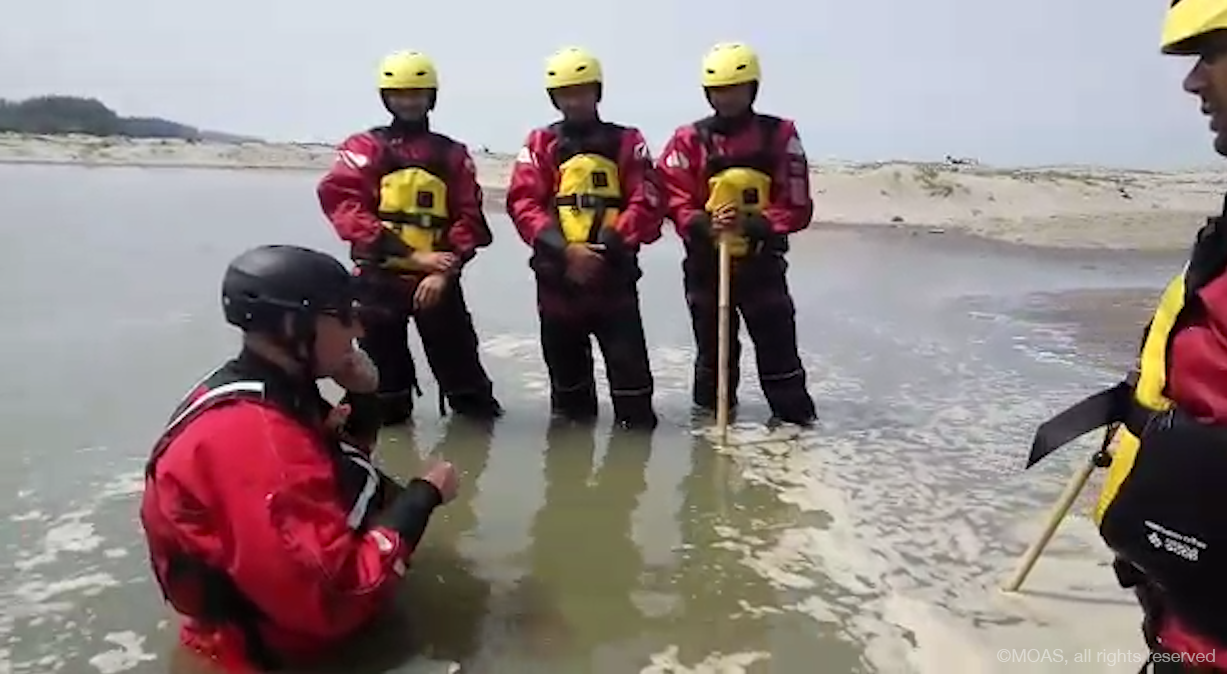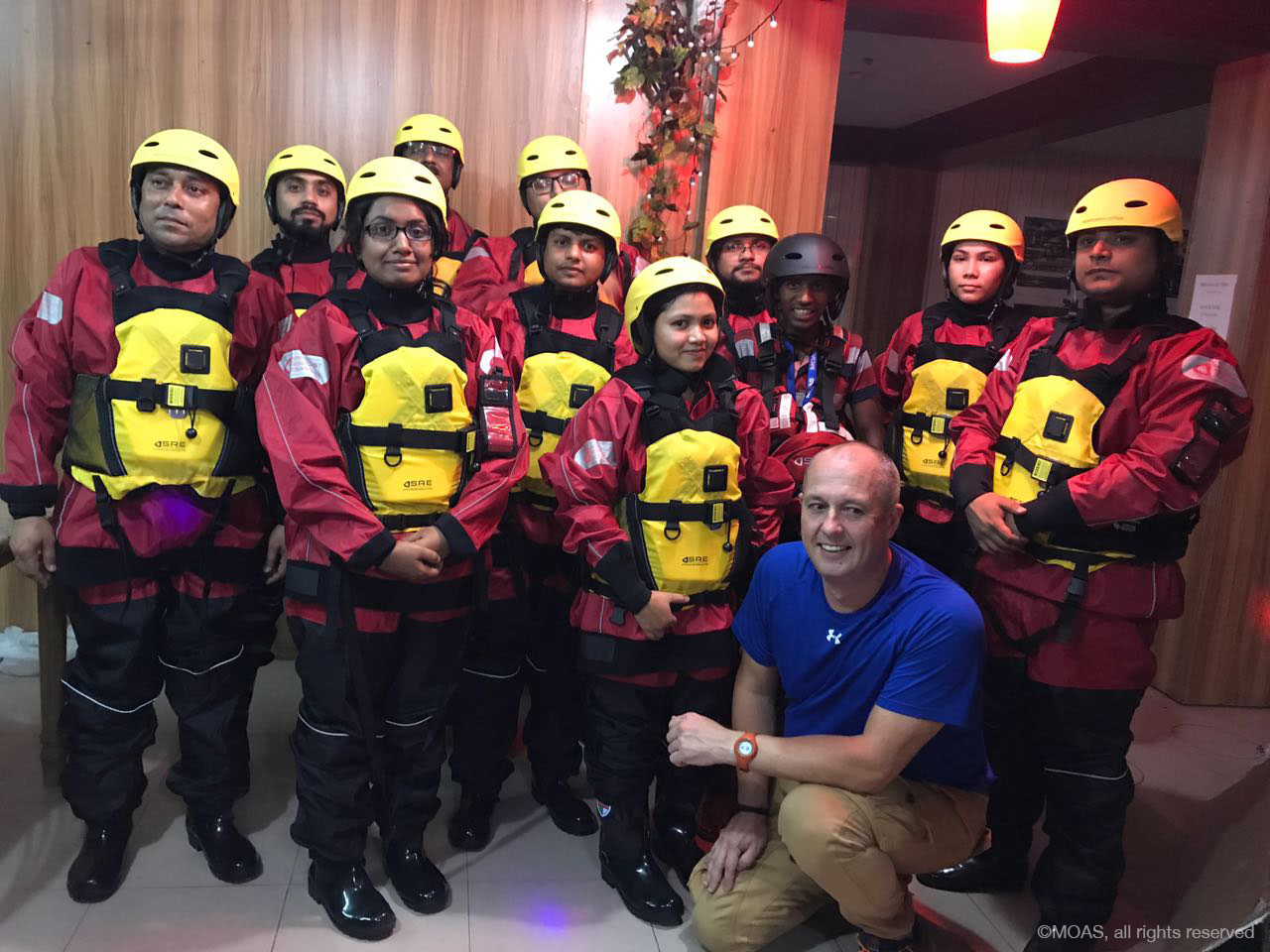Hello and welcome to MOAS…
The rains have started in Bangladesh. That’s the sound of a downpour in Unchiprang just a few weeks ago. It sounds heavy but it’s just the start.
The weather is worsening and we’re back to learn what new preparations aid groups are making, getting the refugee community ready, shoring them up and keeping them informed.
Over the last three months, CARE International, a disaster and development charity, has been preparing over 5,000 households in camps across Cox’s Bazar.
They’re also working with the government to identify and relocate vulnerable families. Zia Choudhury is CARE’s country director, and he tells us more.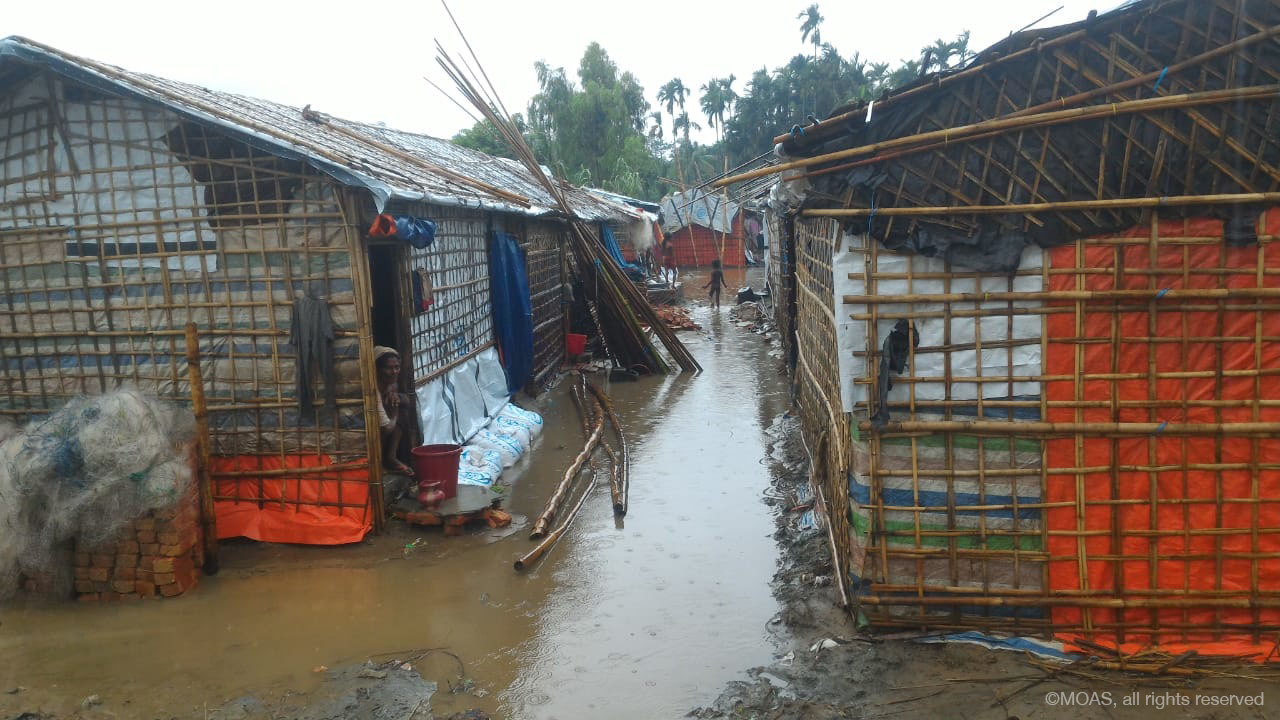
‘In the refugee camps, what I’ve observed from my own very recent visits, is that it’s still extremely densely packed. People are crushed into a very small area, the tents are very small and the number of tents in the area is also huge. So, it’s extremely densely packed and that’s one of my first senses.
I’ve been coming and going since the beginning of the crisis and last week when I was there, I really noticed that whilst it feels more orderly than the early days, it’s starting to become very wet and so the streams and gullies are overflowing and I’ve also noticed that there is a lot more stagnant water around and overflowing puddles everywhere. So it felt to me like the environment is just much more wet and a bit unstable, it’s slippy and slidey there because it’s muddy everywhere.’
What kinds of support is CARE giving to the Rohingya refugees to prepare their shelters for the landslides/floods expected?
‘What CARE has been doing for the three months, because we know the monsoon season is coming. In the camp where we work we have just over 5,000 households/shelters. So, we’ve provided all of those 5000 with materials to help them to strengthen their shelter, so that means additional bamboo, additional tools and additional strappings to tie the plastic to the bamboo. So, basically all the materials you need, plus the tools you need to strengthen your shelter. We’ve provided those in different quantities to just over 5000 households.
We’ve also provided the training and the support needed to people to utilize and build their shelters in the best possible way. These are people who have never lived in a tent before, they’ve basically lived in different kinds of thatched housing. What we’ve also done to prepare people, is those that are particularly vulnerable, there are many female headed households, there are many households with disabled heads of household or very elderly people, we’ve also provided the physical labour required by asking other community to support as well as members of the host community.’
We’ve had a range of volunteers actually come into help the vulnerable to strengthen their shelters.
Only a few days ago IOM reported that one of the camps CARE works in, Camp 16 or Bagghona – Putibonia, was hit by a landslide. None of the over 700 residents living there were hurt. (22,400 total population)
You can follow the weather related incidents in the camps here.
‘…It is a long-rooted grass, its root has a very high-tension strength. The beauty of this grass is that it can survive in extreme weather conditions, that are very cold or hot temperatures. This grass is very useful for slope protection, water purification, cleaning of contaminated land…’
That’s vetiver, a native grass growing around Bangladesh and its main proponent Dr Mohammed Shariful Islam of the Bangladesh University of Engineering and Technology. Vetiver grows wild across the country and has been used for many years by the Bangladeshi government.
From his research, he’s found it to be a cheap and effective method for shoring up slopes, and given time, invaluable in countering landslides in the camps.
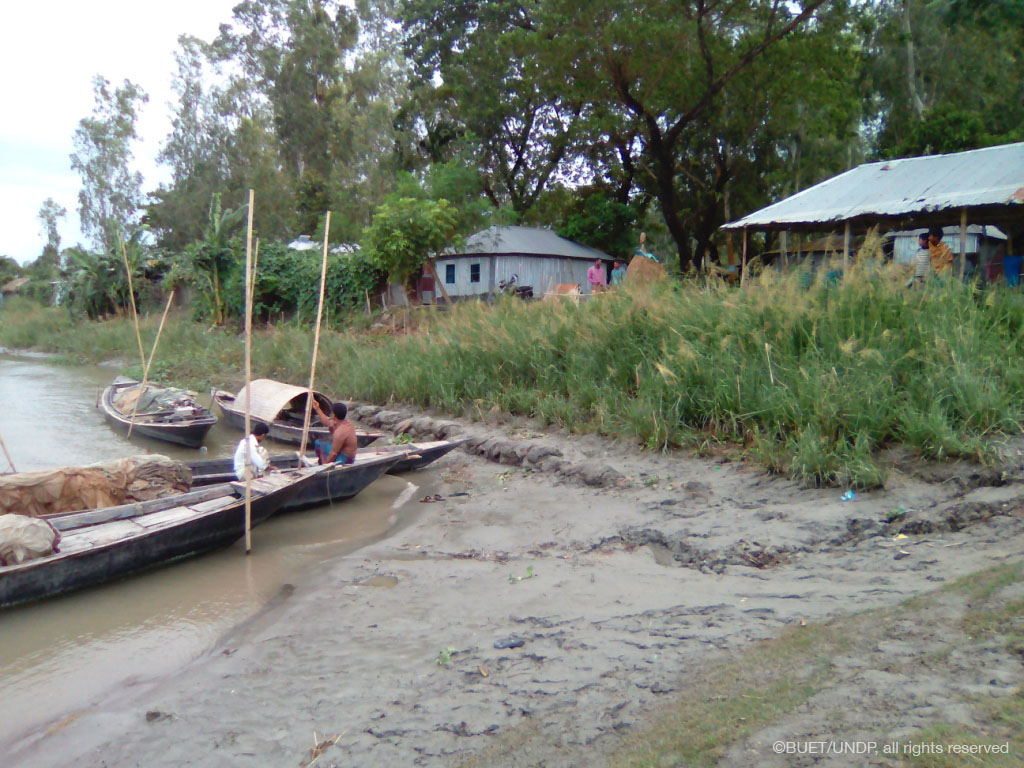
‘Bangladesh is a low-lying delta. It’s formed by sand deposits in the flood plains of the Ganges; Brahmaputra and Surma-Meghna system. River bank erosion and high land erosion as well as the coastal ‘road embankment’ failure is an almost continual problem in Bangladesh. Landslide, riverbank erosion and embankment failure is jeopardizing the development of the country.
That is why slope protection is one of the major concerns of this country. However, the conventional methods that are used for slope protection are very costly and not environmentally friendly. In this situation, this is a very low cost and environmentally friendly solution for slope protection in Bangladesh.’
Vetiver grass is being planted in the camps like Kutupalong. In what ways will vetiver grass be useful in the refugee camps?
‘Yes, definitely this is a great initiative. I discussed about the Vetiver application in late 2017 at a presentation at IOM in Cox’s Bazar. In the refugee camps there are many hills which are prone to landslide or mudslide which during the rainy season. This has already started in Bangladesh. So, although they have started planting Vetiver this year, in my opinion this is late if you want to get the whole benefit.
I’m afraid how much of a benefit it will have this year. It should be started 4 months before the monsoon but I’m expecting that it will create a great success in the camps in slope protection. Not only that, the people of the camps will benefit from its use as firewood, roof thatching and handicrafts etc. So I think there is a big prospect for Vetiver in the Kutupalong camps in Cox’s Bazar.’
Use of Vetiver for road slope protection in Nariya, Sariatpur. This is part of a joint project of BUET and LGED funded by IFAD.
Preparing the Rohingya is as much about hands on work as it is spreading the word about the dangers. But how do you talk to a near million strong community, spread across an almost 7-kilometre region, and in ways they can understand?
Shafaat Ahmed is a Training and Liaison Manager with BBC Media Action, working the UN’s Communication With Communities efforts. They’re working across 27 camps and using community radio stations, Bangladesh Betar and Radio Naf to spread the word.
(CWC is working with the radio stations to create listener groups. These groups allow Rohingya unable to listen to the information messages, a chance to hear and discuss them.)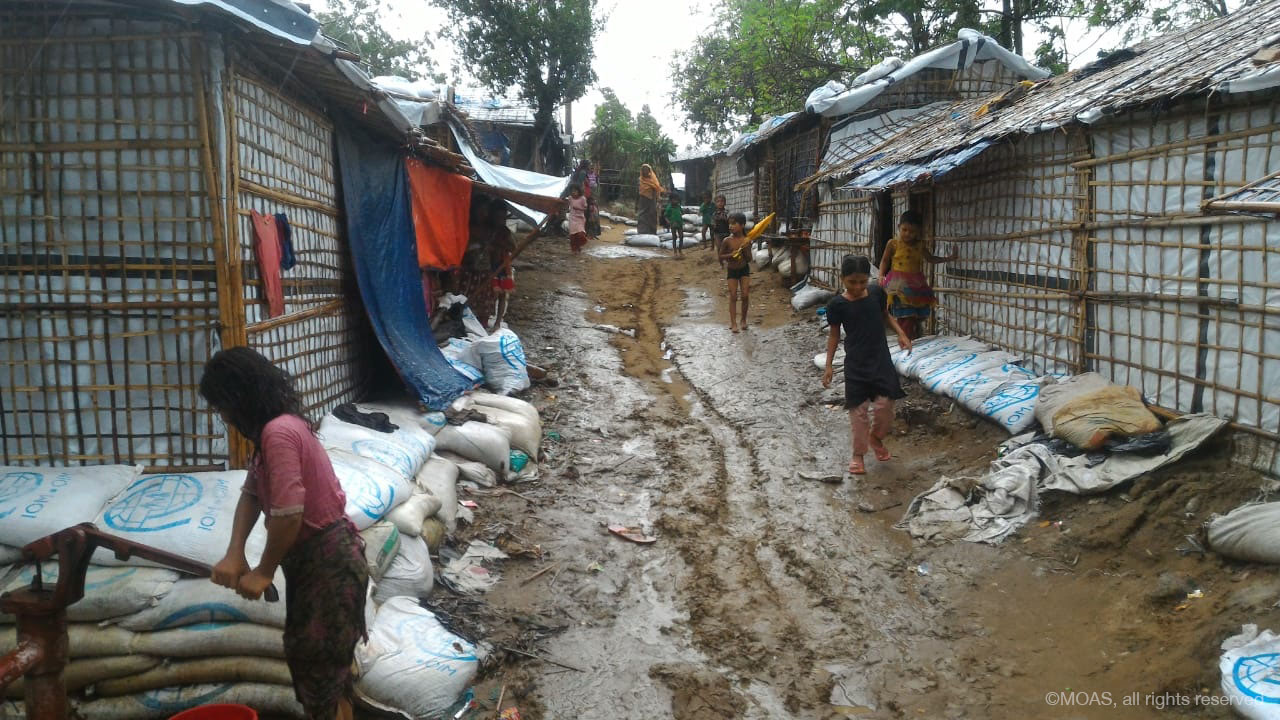
‘There’s a huge amount of people, it’s almost above 80% who are illiterate. They have never had any access to education, even basic education. So, in terms of communication and messaging we are doing pictorial, visual and audio communication. For Radio, all the messages are in the local Rohingya language. Some are in Chittagonian dialect. The Chittagonian and Rohingya language are very similar, it’s around 85% similar. There are some pretty small differences in wordings so we are using both of the languages. In visual communication it’s mostly pictorial.
Apart from that there’s narrow-casting and the message types are actually the same, that we are broadcasting on the Radio. We are keeping all the messages that are from NGOs and government at the same pace, its synced, the same message. In terms of how important they will be in the next few months, we are for the moment in the discussion phase.
Nothing to worry just now. We are just making them aware of how and when early warning messages will be declared, how the situation could be and making them aware of how it could be, and how all the engaged community and volunteers will be acting.’
Can you explain more about the kinds of projects you’re running on the ground as part of your information strategy?
‘The American Red Cross along with CPP, the government led Cyclone Preparedness Programme which is a 40-year-old organisation that has been operating here. Bangladesh is a disaster-prone country and they are very experienced in dealing with these disasters for so long. They have come along and with the American Red Cross and the Bangladesh Red Crescent society to train volunteers in the camps.
Given the scenario, there might not be any NGO worker to give signals when it’s a 4-5 signal for example. We have actually trained volunteers from the Rohingya community about the early warning system and how the flag system works. The flag system is the system that is used nationally by the CPP, by the Bangladesh government. It’s a three-flag system. For the first flag it’s from a signal 1-3 and for the second flag it’s signal 4-7. For the signal 8-10, it’s the third flag. All the volunteers, the community, everyone is aware of the flagging system and what to do when.
For more on the Flag system, click here
To learn about how the early warning system worked during Cyclone Mora May 2017, click here
For the moment we’re doing FAQ discussions, the FAQ is a guideline to trigger discussion and to make the community aware of the system. At the same time, CPP is training and capacity building all the sectoral volunteers who are working in so many other sectors like health and nutrition and WASH. So, it’s actually combined messaging and a combined system in terms of early warning messaging.’
For more on the Emergency Telecommunications Cluster click here
MOAS is also getting its aid stations ready for the coming weather. As well as being MOAS’ Logistics Director, Paul Chamberlain is also a flood rescue expert. He’s been training the medical teams to continue to provide medical care to patients, even when the land is flooded and unstable. 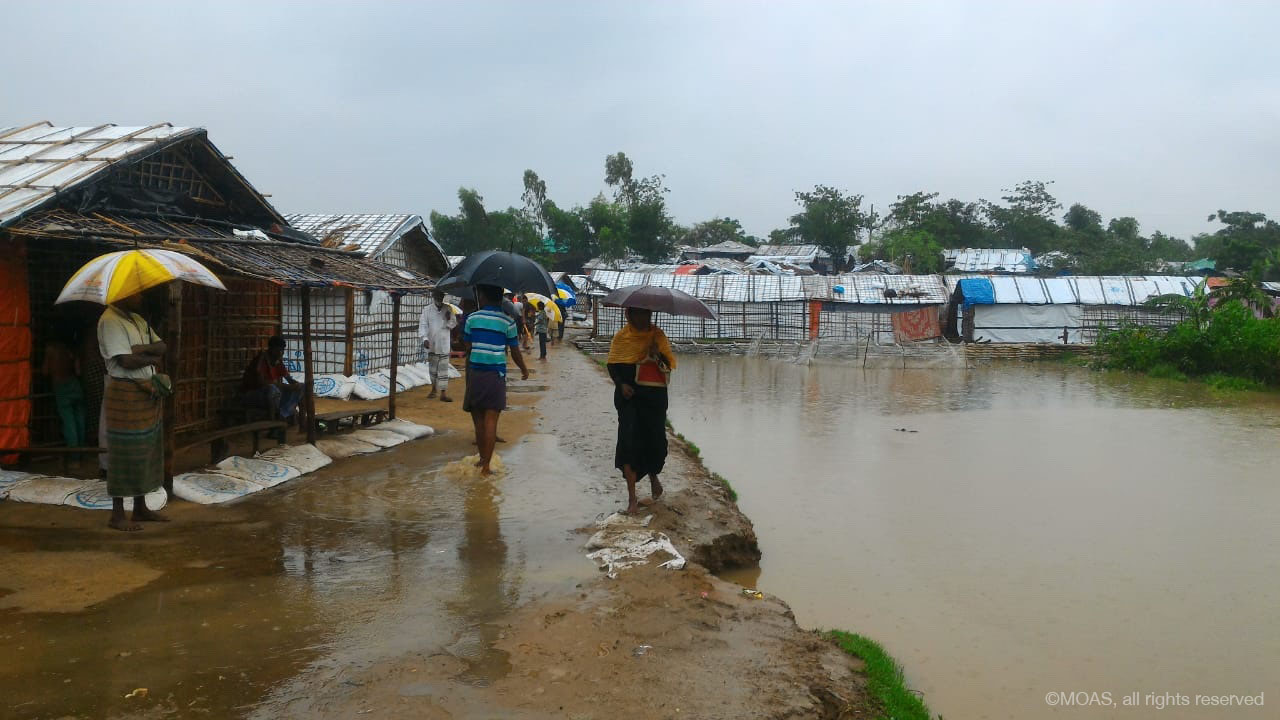
‘So, we’ve spent some time looking at mitigation measures for our two aid stations, so we’ve improved drainage we’ve improved structures, we’ve reinforced retaining walls when necessary, we’ve strengthened gates to make them more cyclone-proof, so we’ve done mitigation works as best as we can.
We’ve also spent quite a bit of time working with our team of doctors and nurses and providing them with some training to operate in flood, and that training that they’ve had is comparable to the training given to the Bangladesh fire and rescue service.
It’s about as high a level of training that you can get in Bangladesh at the moment, and we’ve been fortunate through donations that we’ve been able to buy and ship in some equipment to keep our team safe when working in flooded environments.’
What kind of training is the team getting?
‘So, what they’ve now got is the capacity if needed, to wade through floodwaters safely, which is something quite unique among medical teams. So, there are real fears that areas of the camps could become isolated and therefore people find it difficult to get to medical care.
So, we’ve taken a principle that is utilised the world over that if people can’t get to medical care in a time when they need it the most, we will take the medical care to them. We now have the capacity to load up some equipment on an inflatable sled and the staff all have some protective equipment and suits that they can wear to protect them from the contaminated water.
They now have the ability to wade into and access areas of the camps where we work that maybe cut off by floodwater and provide treatment there or, if necessary, evacuate people back to our camps and provide further treatment there before providing onward referral.’
MOAS Medical Team Receives Flood Training:
How’s the team responding to the training?
‘Traditionally Bangladesh, a lot of its flooding is quite low energy, but what we’re expecting because of the topography and the slopes, we’re expecting water to be flowing and moving, so it’s a much more high-energy environment. It’s a level of flooding potential they haven’t seen before in this part of Bangladesh which is why we spent a little bit of time planning and training for it.’
What is the worst-case scenario?
‘The worst-case scenario would be a cyclone. A cyclone would bring very strong winds 60, 70 – 80 mile an hour winds, flooding and heavy rains. The initial effects of that cyclone would be to wipe out just about every shelter in every single camp, the secondary effects would obviously be flooding.
Post the immediate flood there would be issues of needing to resupply fresh drinking water because that would all be contaminated, re-establish food supplies, re-establish healthcare. In the event of a cyclone, it wouldn’t just affect the million or so Rohingya refugees in the camp but it would also effect the entire host community of the area, many of whom are incredibly poor and live in shelters made of bamboo as well.
So an event like that would be just about the worst imaginable and would rely on a combined effort not only from the humanitarian and aid agencies working there, but also the Bangladeshi military and civil defence.’
At the time of recording, the first reported monsoon rains have hit the camps. Around 230 millimetres of rain has fallen on Cox’s Bazar in just 24 hours (Monday 11th June) and Bangladesh’s Meteorological Department warns there’s more on the way this week. So far 28,000 refugees have been relocated and many thousands of shelters strengthened.
But will it be enough?
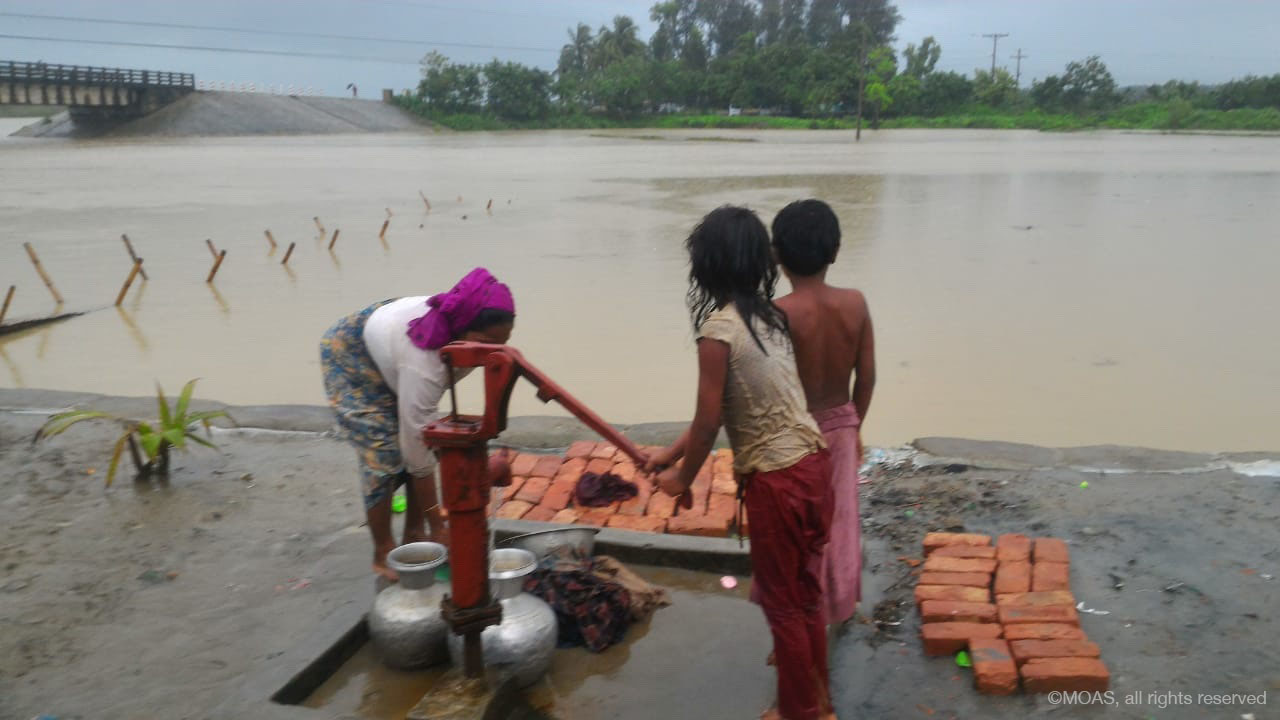 If you liked this Podcast don’t forget to hit like, comment and subscribe for more Podcasts from us.
If you liked this Podcast don’t forget to hit like, comment and subscribe for more Podcasts from us.
You can also follow us on our social media. Check out our latest updates on Facebook, Twitter, Instagram, Youtube and AudioBoom… or you can donate to help us help Rohingya refugees.
From all of us here at MOAS: goodbye.

